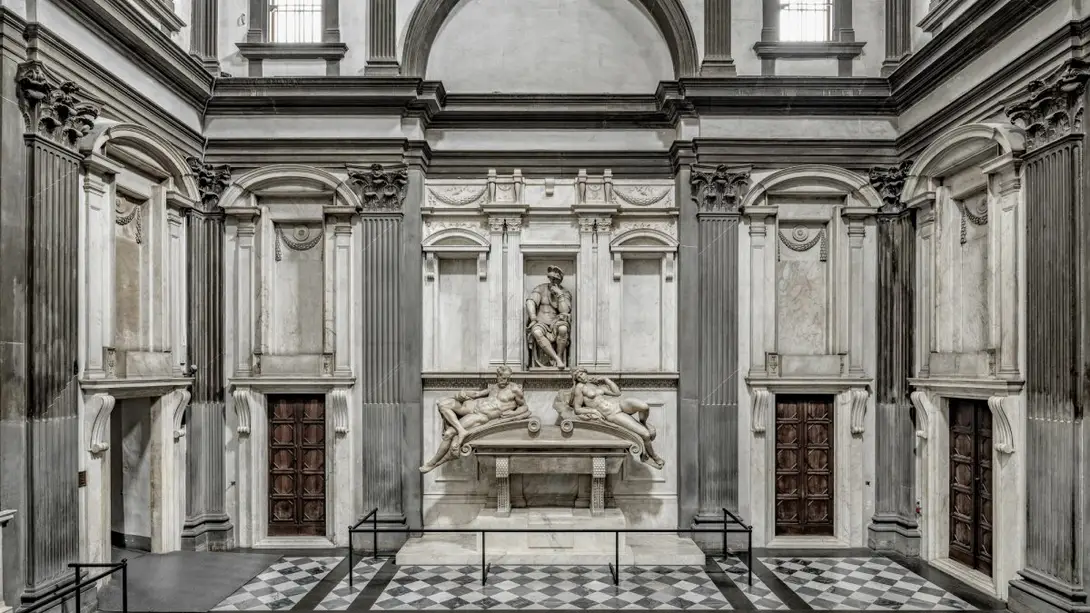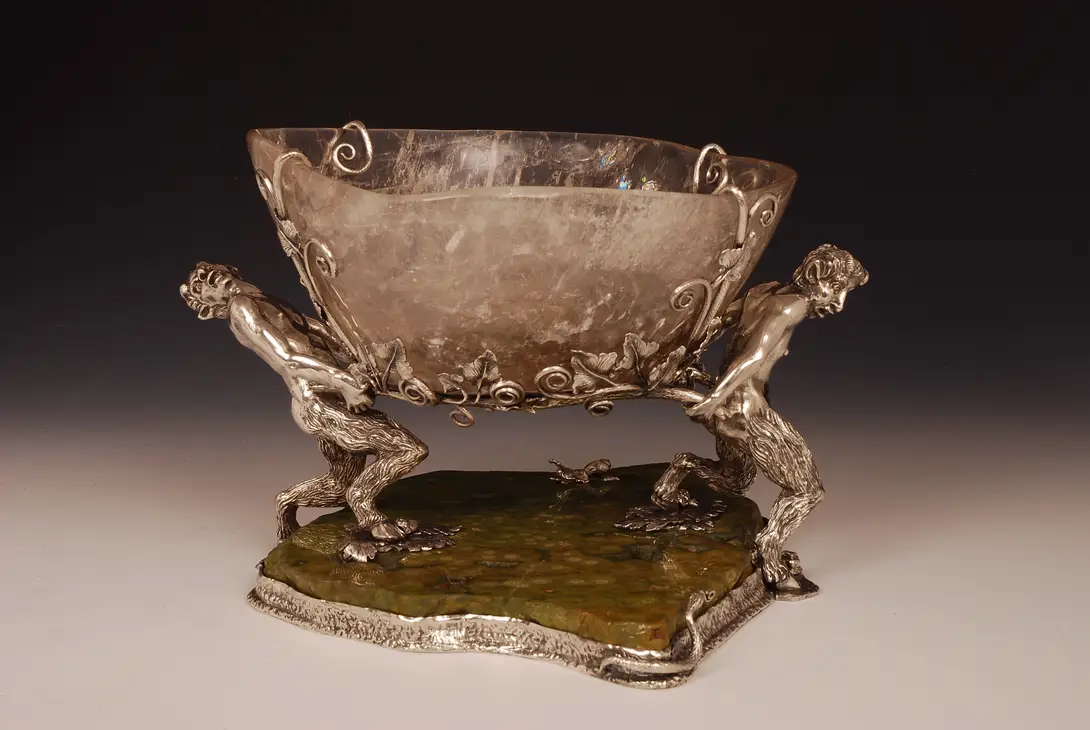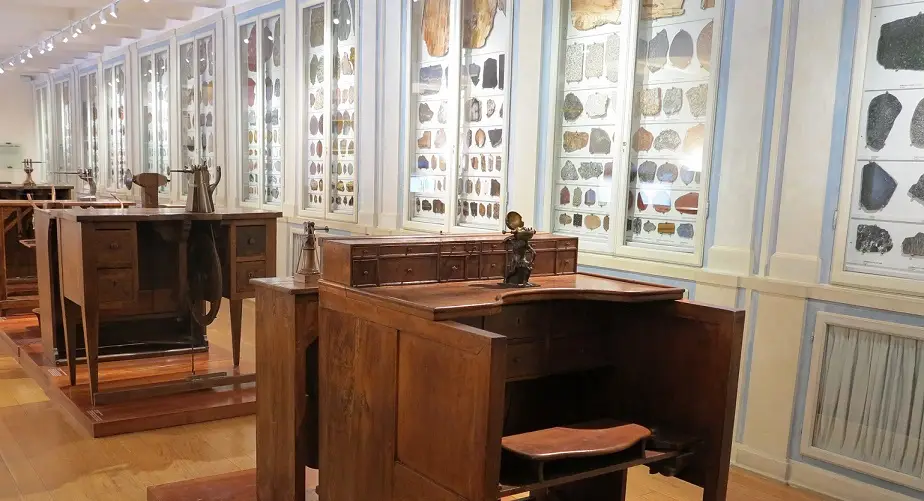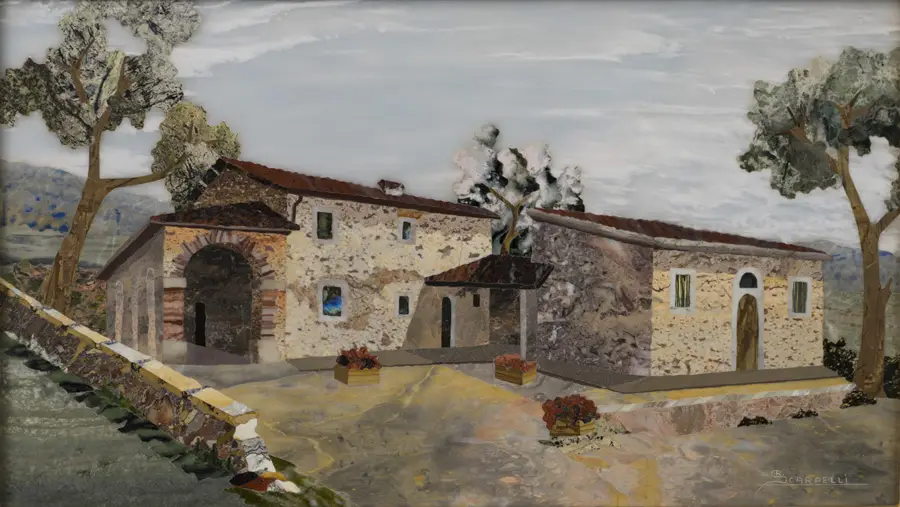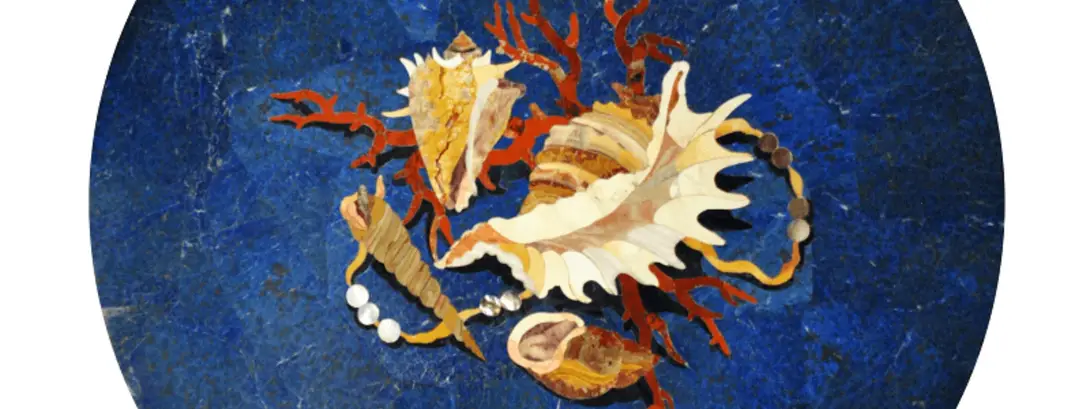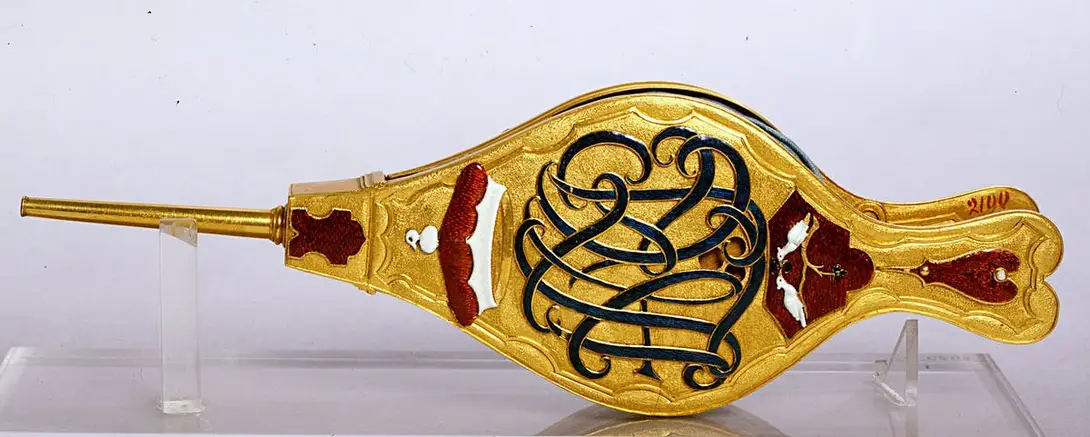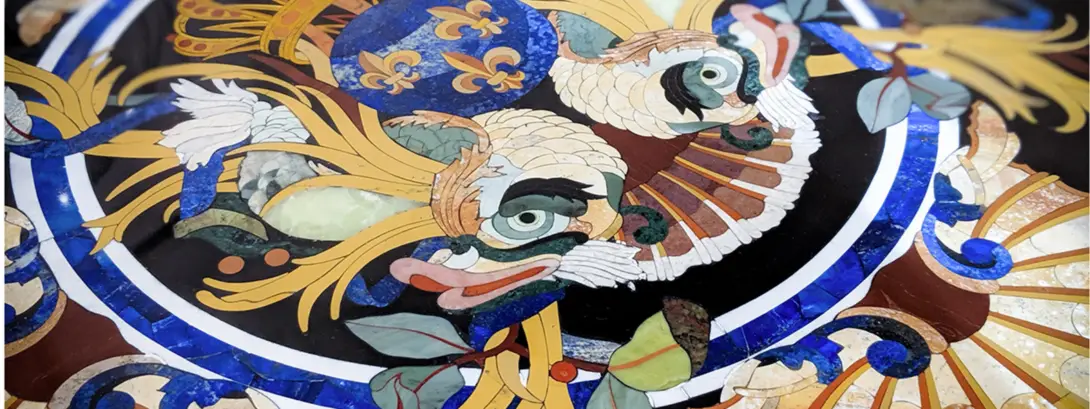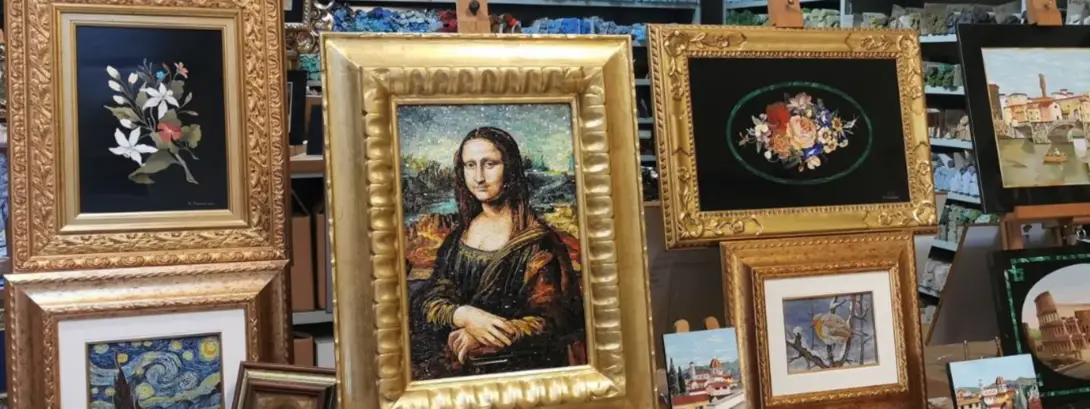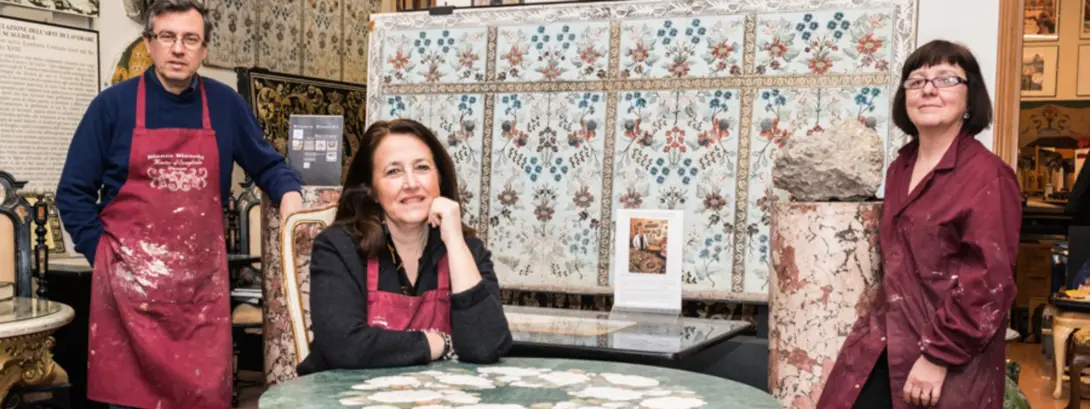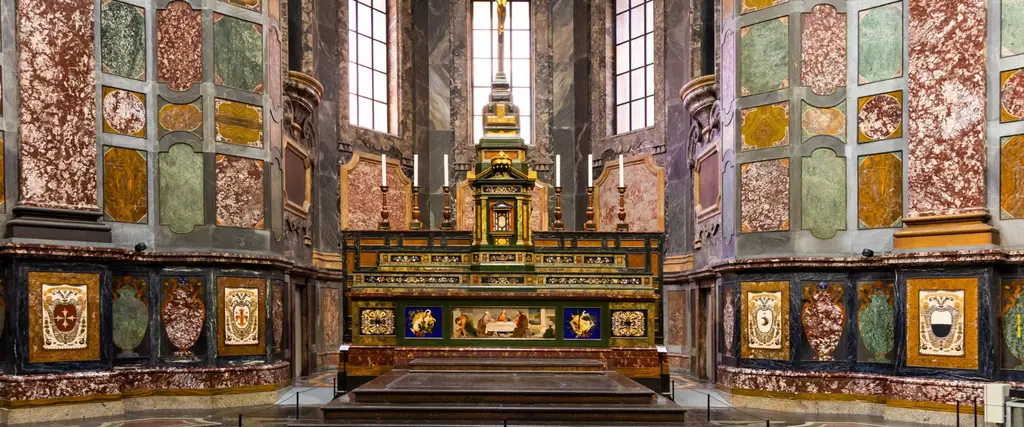
The stones of Florence
The relationship of craftsmen's trades with the architecture of the city of Florence has always been inseparable and symbiotic. With this itinerary dedicated to the Stones of Florence, we intend to emphasise how much architecture has been able to express itself through the craftsmen and masters of art, and how craftsmanship has been the driving force behind the decorations and constructions that characterise the city of Florence.
Stones have not only given form and structure to buildings, for example their majestic rusticated and polished ashlar Renaissance façades, but have also decorated the interiors of palaces and houses through furnishings, tables and, in some particular cases, actual walls, as can be seen in the splendid Chapel of the Princes in the Medici Chapels of the Church of San Lorenzo.
These incredible works were created, and still are today, by master craftsmen who use semi-precious stones as fundamental elements, colours on a palette, to compose their ideas and create objects using the techniques of commesso in semi-precious stones, micro-mosaic, inlay and scagliola. Centuries of wonderment enclosed in the workshops we present here, which do not limit themselves to the execution of traditional stylistic features, but are capable of exploiting technique and tools for new tastes, reinventing and experimenting, updating their offerings with subjects of a contemporary character, an expression of new commissions.
A journey to discover ancient manual traditions that have been able to reassert themselves by bringing the knowledge of yesterday's hands into the present day.
This itinerary is part of the European project Crafts Code.
Artex
The places
Stages
Museum of Medici Chapels
The Museo delle Cappelle Medicee consists of various rooms, all of inestimable value. These include the New Sacristyby Michelangelo, and the sumptuous Chapel of the Princes, pantheon of the Medici Grand Dukes, and the Crypt.
The Museum is accessed through a new entrance, inaugurated in 2023, which leads to the Crypt, where some of the tombs of the Medici sovereigns and their families are located, and where part of the Treasure of San Lorenzo is on display.
Starting in 1604, thanks to Grand Duke Ferdinando I de' Medici the construction of the imposing Chapel of the Princes begun; it was destined to house, in the octagonal room covered with a triumph of inlays of precious and semi-precious stones, the sarcophagi of the grand dukes. This type of decoration (the so-called Commesso di pietre Dure) constitutes one of the most important craft traditions in Florence. Work continued for over two centuries.
The New Sacristy represents the last Florentine Michelangelo's masterpiece, who worked on it from 1521 to 1533, before his final departure for Rome. The great artist was responsible for the overall design of this space, a synthesis of sculpture and architecture. At the foot of the funeral monuments, of Lorenzo Duke of Urbino and Giuliano Duke of Nemours, are the famous allegorical figures of Day and Night, Dusk and Dawn. Unfinished, however, are the tombs of Lorenzo the Magnificent and his brother Giuliano, surmounted by a splendid Madonna and Child, also by Michelangelo.
Below this last room is Michelangelo's Secret Room, where the artist probably took refuge during the Republican era, leaving some drawings on the walls. This space, not included in the canonical museum tour, can only be visited by appointment.
Pestelli
The Pestelli company was founded in 1908 and uses artisanal goldsmithing techniques handed down from father to son. From the union of tradition, technical experience and creative originality, refined jewellery but also surprising furnishing objects made of gold, silver and semi-precious stones are born, in which the 'wonder of forms' is fused with attention to detail and the preciousness of materials.
Unique works, inspired by the taste and atmosphere of the past, suitable for a modern Wunderkammer.
Museo dell'Opificio delle Pietre Dure
Opificio or manufacture: the museum focuses on the output and history of the Court Manufacture established by Ferdinando I dei Medici in 1588, which was specialized in pietre dure, magistral inlay of semi-precious stones.
It contains furniture (cabinets, tables, panels for the Chapel of Princes in San Lorenzo) decorated a commesso, that is with different-coloured stones cut and arranged so as to form pictorial compositions, or with painted stone or in scagliola (a very light kind of plaster).
The workshop exhibits include samples of materials, workbenches and tools. The Opificio still restores mosaics made from semi-precious stones.
Scarpelli Mosaici
The Scarpellis, Masters of Art, create mosaic works by continuing the ancient tradition of Florentine commesso in semi-precious stones. The masterpieces they create emerge from their profound experience in the selection of stones and the choice of colour tones that the materials offer in nature.
Scarpelli's masterpieces can be admired all over the world.
Bargello National Museum
The Bargello National Museum is a place of extraordinary interest. The evocative medieval building houses a unique collection of Italian sculpture, mainly from the Renaissance period (masterpieces by Donatello, Michelangelo, Verrocchio, Della Robbia), but also from the Mannerist and Baroque periods.
The fascinating Medieval building was built starting in 1255 as the Palazzo del Capitano del Popolo; during the Medici era it became the seat of the Bargello (Chief of the guards who presided over public order) and was later turned into a prison. In the 19th century, following a philological restoration, the palazzo was turned into a museum: the first national museum of the unified state.
On the ground floor, next to the splendid courtyard, is the 16th century hall with a series of sculptures by Michelangelo (Bacchus, Tondo Pitti, Brutus and David-Apollo) and works by Sansovino, Giambologna and Cellini. The 13th-century hall on the first floor houses masterpieces by Donatello, including the David and St George, and sculptors from the early Florentine Renaissance (Luca della Robbia and Desiderio da Settignano); the two versions (by Ghiberti and Brunelleschi) of the Sacrifice of Isaac, made for the competition (1401) for the second door of the Baptistery, are also on display here. On the second floor are Tuscan sculptures from the second half of the 15th century, including Verrocchio's famous Lady with the Mazzolino, as well as works by Rossellino, Pollaiolo and others. A small Baroque masterpiece is the bust of Costanza Bonarelli by Gian Lorenzo Bernini.
The Giottesque fresco cycle in the Cappella del Podestà features one of the oldest portraits of Dante Alighieri. The museum's collections include an important collection (‘Carrand Collection’) of Gothic and Renaissance minor art (ivories, gold, ceramics, weapons, bronzes and medals), as well as a complete panorama of Italian majolica from the 15th century onwards. Also noteworthy are the rooms dedicated to the glazed terracottas of the Della Robbia family and the new Islamic Gallery, recently reorganized with the Majolica Room.
Cecilia Falciai decorazioni artistiche scagliola
A new Florentine artisan workshopspecialising in scagliola and Florentine commesso mosaic work. All works are unique pieces that Cecilia Falciai creates personally. While starting from tradition, she also approaches modern influences, experimenting both on the subjects and on the combination of techniques, thus obtaining very personal works. The workshop is an open space for anyone who wants to see first-hand what this craft consists of.
Treasury of the Grand Dukes - Pitti Palace
The Treasure of the Grand Dukes (formerly known as the Silver Museum) occupies the sumptuous frescoed rooms of the Summer Apartment of the Medici and Lorraine Grand Dukes, located on the ground floor and mezzanine of the Pitti Palace.
The Medici Treasury, the fruit of their collecting, is housed here: from the semi-precious stone vases of Lorenzo the Magnificent to the cameos and intaglios of Cosimo I, from the rock crystals of Francesco I to the ambers of Maria Magdalena of Austria - together with the jewellery of Anna Maria Luisa, the last heiress of the lineage. Also of great value is the collection of oriental ceramics. ‘The Salzburg Treasure, on the other hand, was brought to Florence by the Lorraine Grand Dukes (in particular Ferdinand III). The Hall of Donations displays a collection of jewellery made from the 18th century to the present day by prestigious European and Italian manufacturers.
Particularly fascinating is the Salone di Giovanni da San Giovanni (named after the main painter who frescoed this room). The pictorial cycle, painted starting in 1635 on the occasion of the marriage between Ferdinando II de‘ Medici and Vittoria della Rovere, is a celebratory allegory of the Medici dynasty: on the side walls is depicted the Greek culture that, having left Athens after a long pilgrimage, arrives in Florence (’new Athens') welcomed by Lorenzo the Magnificent. On the ceiling, an allegory of the Grand Ducal wedding. The frescoes were completed in 1642 by Cecco Bravo, Ottavio Vannini and Francesco Furini.
The decorations of the later rooms, executed by 17th-century artists Mitelli and Colonna, are among the earliest and most eloquent examples of quadraturism (grandiose painted architectures aimed at illusionistically expanding space).
Pitti mosaici
Pitti Mosaici was founded at the beginning of the 1980s by Emilio De Filippis, who goes by the name of Ilio. After studying architecture in Florence, Ilio gradually moved away from religious sculpture to take an interest in residential architecture. But during his studies, he discovered another manufacturing technique: the antique art of inlaid pietra dura, ‘the art of the Medici’.
Ilio De Filippis opened his laboratory in Piazza Pitti in 1982, continuing this particular Florentine art of creating reproductions in pietra dura and semi-precious stones, a technique known as commesso fiorentino. Ilio works together with his children Isse and Iory, who represent the fourth generation of family artists.
Fratelli Traversari
It is not easy nowadays to find an artisan company that has proudly reached its fourth generation: the Fratelli Traversari company is one of the few workshops that continues a tradition of craftsmanship that began at the end of the 19th century.
The history of the Fratelli Traversari company began in Florence with the founder Arturo around the end of the 1870s when it was just a small souvenir shop in Via Ser Ventura Monaci, in the Piazza Ferrucci area, but already specialised in high quality micromosaic costume jewellery.
From 1944, the business passed into the hands of Arturo's two sons, Alfredo and Aldo, (hence the name Fratelli Traversari) who, in Via Pindemonte, continued the successful production of earrings, rings, brooches, bracelets, frames and crosses in micromosaic.
This technique, which originated in Rome at the end of the 18th century, uses instead of the traditional square tesserae, the so-called 'teghe' (thin rods of spun enamel glass in various shapes and colours) obtained by placing Murano glass plates in a special kiln which, thanks to the spinner's skill, are fused together to obtain different colours and shaped into various shapes: plates, rose petals, daisies, myosotis, leaves and many others.
Later the business moved to Via Lorenzo Bellini and from the seventies the management passed into the hands of Alfredo's son, Franco, who, at the age of just twenty-five, started the production of micro-mosaic, cut glass and Florentine commesso in semi-precious stones.
For some years now, Franco's two children, Daniele and Letizia, have also been actively involved in the company and, together with their cousin Lorenzo, who specialises in semi-precious stone mosaic, have brought a breath of fresh air to the workshop.
Bianco Bianchi. The masters of scagliola
The Florentine art of marquetry in scagliola, much loved by the Grand Duke of Tuscany, lives again by tradition in the Bianchi family workshop, whose founder, Bianco, at the end of the 1940s rediscovered this craftsmanship, bringing it back to the splendour of the past.
Today, his children, Alessandro and Elisabetta, animated by the same passion, continue to produce unique pieces such as tables, paintings, panels and giftware in classical or contemporary taste.
